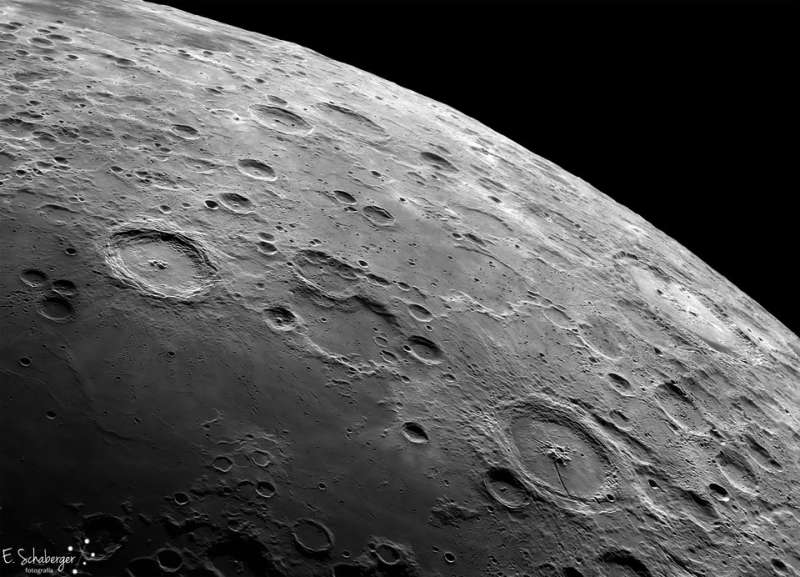Credit & Copyright: Eduardo Schaberger Poupeau
Explanation:
The history of the Moon is partly written in its craters.
Pictured here is a lunar panorama taken from Earth featuring the large craters
Langrenus, toward the left, and
Petavius, toward the right.
The craters formed in separate
impacts.
Langrenus spans about 130 km, has
a terraced rim, and sports a central peak rising about 3 km.
Petavius is slightly larger with a 180 km diameter and has a distinctive fracture
that runs out from its center.
Although it is known that Petravius crater is about 3.9
billion years old, the origin of its large
fracture
is unknown.
The craters are best visible a few days after a
new Moon, when
shadows most greatly accentuate vertical walls and hills.
The featured
image is a composite of the
best of
thousands of
high-resolution,
infrared,
video images taken through a small telescope.
Although mountains on
Earth
will likely erode into soil over a billion years,
lunar craters Langrenus and Petavius
will likely survive many billions more years, possibly until the Sun expands and
engulfs
both the
Earth and
Moon.
Watch:
the November 11 Transit of Mercury
from
Earth or
from
Space.
1999 2000 2001 2002 2003 2004 2005 2006 2007 2008 2009 2010 2011 2012 2013 2014 2015 2016 2017 2018 2019 2020 2021 2022 2023 2024 2025 |
Yanvar' Fevral' Mart Aprel' Mai Iyun' Iyul' Avgust Sentyabr' Oktyabr' Noyabr' Dekabr' |
NASA Web Site Statements, Warnings, and Disclaimers
NASA Official: Jay Norris. Specific rights apply.
A service of: LHEA at NASA / GSFC
& Michigan Tech. U.
|
Publikacii s klyuchevymi slovami:
Moon - crater - Luna - krater
Publikacii so slovami: Moon - crater - Luna - krater | |
Sm. takzhe:
Vse publikacii na tu zhe temu >> | |
